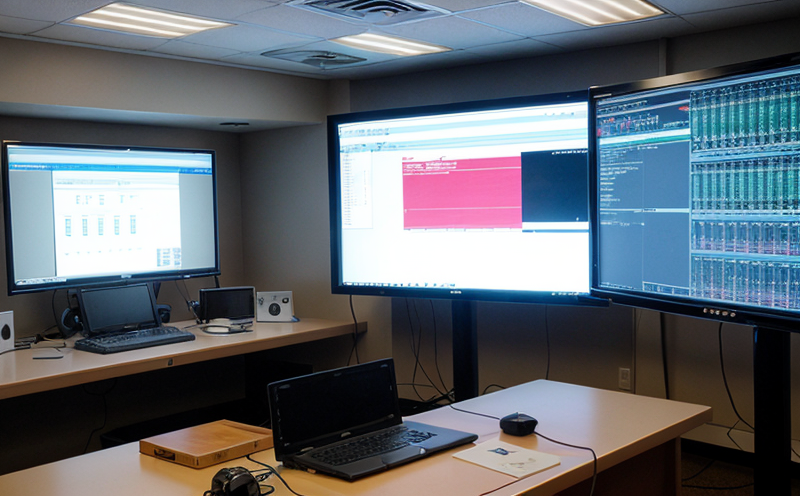EN 50155 Environmental Testing of Signaling Electronic Equipment
The European Railway Standard EN 50155 defines the environmental testing requirements for electronic equipment used in signaling and control systems in railway applications. This standard is crucial to ensure that all equipment can withstand the harsh conditions encountered during rail operations, including temperature extremes, humidity, shock, vibration, and other environmental factors.
The rigorous tests outlined in EN 50155 are designed to simulate real-world operating environments. The standard aims to guarantee reliable performance of signaling systems under various environmental stresses, which is essential for the safety and efficiency of railway operations. The testing covers a range of parameters such as temperature cycling, altitude stress, mechanical shock, vibration, and other relevant conditions.
The significance of this standard cannot be overstated, especially considering that railway infrastructure can operate in diverse geographical locations worldwide. Ensuring that signaling equipment meets these stringent requirements is critical for maintaining safety standards across all rail systems. This service ensures compliance with the latest industry best practices and regulatory requirements, thereby minimizing risks associated with non-compliance.
The testing process involves a series of procedures to evaluate how electronic components perform under extreme conditions. These tests are conducted in controlled environments that simulate the operational environment where the equipment will be used. The objective is to identify any potential weaknesses or vulnerabilities in the design early on, allowing for necessary adjustments and improvements.
The scope of EN 50155 testing covers various aspects such as mechanical stress due to vibration and shock, thermal cycling from extreme cold to hot conditions, exposure to moisture and humidity, altitude stress, and electromagnetic interference. Each test is designed to simulate the specific challenges that railway signaling equipment faces in its operational environment.
The testing apparatus used for EN 50155 includes specialized chambers capable of simulating various environmental stresses. These chambers are equipped with precise control systems that can accurately replicate temperature, humidity, and other conditions required by the standard. The tests often involve exposing specimens to rapid changes in temperature, exposure to high levels of humidity, and mechanical shock.
The acceptance criteria for EN 50155 testing are stringent, ensuring that only equipment meeting these standards is approved for railway use. Compliance with this standard is a testament to the reliability and durability of signaling electronic equipment used in rail systems worldwide. This service provides comprehensive environmental testing services tailored specifically to meet the demands of EN 50155.
| Standard Name | Version |
|---|---|
| EN 50155 | 2nd edition (2014) |
The tests conducted under EN 50155 are not only critical for ensuring the reliability of railway signaling equipment but also play a vital role in enhancing overall safety and operational efficiency. By adhering to these standards, manufacturers can ensure that their products meet the highest level of quality and performance required by the industry.
| Application Area | Description |
|---|---|
| Railway Signaling Systems | Evaluating the robustness of signaling equipment in harsh environments. |
| On-Board Systems | Assuring the reliability of on-board electronic systems under varying conditions. |
Applied Standards
The standard for environmental testing in railway signaling and control systems is governed by EN 50155. This European Railway Standard specifies the conditions to which equipment must be subjected during various environmental tests. It ensures that electronic components and subsystems used in these critical systems can perform reliably under a wide range of climatic, mechanical, and electrical stresses.
| Standard Name | Version |
|---|---|
| EN 50155 | 2nd edition (2014) |
The standard covers a comprehensive set of tests that simulate real-world conditions, including temperature cycling, mechanical shock, and vibration. Each test is designed to ensure that the equipment can withstand the stresses it will encounter during its operational lifetime. Compliance with EN 50155 demonstrates the commitment to quality and reliability in railway signaling systems.
Industry Applications
| Application Area | Description |
|---|---|
| Railway Signaling Systems | Evaluating the robustness of signaling equipment in harsh environments. |
| On-Board Systems | Assuring the reliability of on-board electronic systems under varying conditions. |
The environmental testing outlined in EN 50155 is particularly important for railway signaling and control systems. These tests ensure that equipment can operate reliably even when subjected to extreme temperatures, humidity, shock, and vibration. This is crucial because railway signaling and control systems are often deployed in challenging environments, including tunnels, high-speed lines, and remote areas.
By adhering to the rigorous testing protocols defined by EN 50155, manufacturers can ensure that their products meet the highest standards of quality and reliability. This not only enhances safety but also contributes to the overall efficiency and performance of railway operations worldwide.
Use Cases and Application Examples
- Evaluating the robustness of signaling equipment in harsh environments.
- Ensuring that on-board electronic systems can operate reliably under varying conditions.
- Testing the durability of railway control systems subjected to mechanical shock and vibration.
- Assessing the performance of signaling components exposed to high humidity levels.





